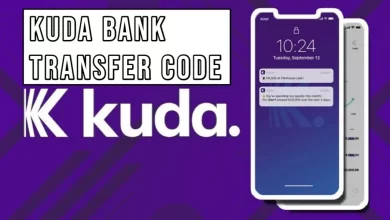How to Use Goosuggest to Improve Your SEO Rankings
Goosuggest, like Google Suggest and other autocomplete services, tries to predict what your search query might be as you type it in. It also suggests similar searches that may interest you based on your search history and popular questions by other users. By incorporating Goosuggest into your website, you can improve both your site’s rankings and traffic by making sure people are finding what they’re looking for right away on your site instead of having to keep trying new keywords until they find what they want. Here’s how you can use Goosuggest to improve your SEO services goosuggest rankings on your website.
What Is Goosuggest?
Goosuggest’s site is a haven for website owners who need help making their pages rank better in search engine results pages (SERPs). Just enter your domain name, and you can quickly and easily see your ranking on Google for specific keywords. Suppose you compare your site’s ranking on Google for a particular keyword with your competitors. In that case, you’ll have a better idea of where you need to focus your SEO strategy and priorities.
Along with searching keywords and suggesting your desired websites, our autocomplete tool includes helpful tips on optimizing your website to make it more effective at attracting visitors. Don’t wait any longer! There’s no reason not to use our easy-to-use autocomplete tool to see how you can improve your ranking on Google. Give it a try today!
Using Full Word Suggestions
Users type in keywords to search for, and your website’s meta title and description should contain these words. For example, if you are writing a site about chocolate milk, your meta description tag should include those words: chocolate milk for sale. This will help Goosuggest understand what users look for when searching through Google.
We’ll show you how to use your website’s meta description tag to rank higher in Google searches. This is super important because it is one of Google’s top three ranking factors: Essentially, if you have a Meta title and description that contains keywords, which appear on-page, Google will crawl your page more often.
To access your website’s meta description, you must first log into your site with a webmaster or administrator account. Next, you want to click Edit Html to access your page’s source code. You will see your page’s Meta description towards the bottom of your source code box: The second paragraph is what Google reads and should contain a short blurb about each page.
Using Partial Word Suggestions
The Google Suggest feature, introduced in late 2010 and available for all languages, allows users to complete part of a search query and only show results that include that partial phrase. This powerful SEO tool for website owners will pull more people into your site even if they misspell words. Partial word suggestions allow you to attract visitors looking for your content even if they misspell words or mix up their phrasing. Use partial word suggestions on sitemaps, internal linking pages, and analytics reports.
Sitemaps are one of your most important on-page SEO elements. They help search engines crawl your site and see its internal structure. By using partial word suggestions, you’ll attract more visitors looking for your site because they’ve likely made a typo while searching in Google or Bing.
What Are Good Keywords?
Every website needs its keywords, but that doesn’t mean you should choose them at random. Choosing the right keywords can significantly impact your search engine ranking and traffic; choosing poor ones can have just as detrimental an effect. One way to ensure you select great keywords is by looking at what other sites rank in Google. Sites like Goosuggest let you plug in your website address and see what other websites rank for.
You can then use these keywords to inspire your content and metadata. Just remember, if you’re using Goosuggest or similar services, always check with Google Keyword Planner to ensure you’re not targeting a keyword that is too competitive for your business.
What Are Bad Keywords?
You’ve heard it all: Keywords are essential when writing a post for SEO purposes. But how do you know which keywords to use? How can you improve your SEO rankings while ensuring that your content remains readable and natural? Let’s start with a few questions: What are the wrong keywords? What are good keywords? And what words should be avoided when writing an SEO-friendly piece of content?
If a keyword is generic and likely to be used by multiple people, it’s probably not as valuable. Common words such as of, for, and they are unlikely to result in high traffic volume. As a general rule of thumb, if your content would read just as well without a particular word—and you wouldn’t even notice its absence—it might be considered generic. Why should you avoid using these types of keywords?
Final Thoughts
How important is it that you optimize your writing for search engines? The answer depends on how much time and money you are willing to invest in SEO. SEO may be worth it if you have a long-term vision for growing your website or business. You never know who will see one of your articles on social media, link back to it, and get their visitors checking out your site.








